By Marijn Kuizenga
A new summer means a new season for field work! This season we are embarking on a project which aims to characterize mercury contamination in freshwater lakes across Northern Norway and study its effects on three-spined stickleback populations. During the summer of 2022 we are studying sticklebacks from 21 lakes scattered throughout Nordland. The selected lakes brought some unique challenges with them: some were easily reached by car but were a 6+ hour drive from the university; some others were very remote and required hiking; several lakes were in nature reserves or national parks and required extra preparation and permits; some lakes were beachy; some swampy; some mountainous, and all of them were completely new to our team. This made the summer’s goal quite ambitious and exploratory! Welcome to ‘Extreme Sticklebacking’!
To tackle this challenge, we recruited a large team consisting of some of our most seasoned ‘Sticklebackers’ and a large group of enthusiastic volunteers: Joost Raeymaekers, Brijesh Singh Yadav, Thijs Bal, Amalia Mailli, Camela Haddad, Sven Keizer, Diederik Blaauw, Arun Mattanavile Shankregowda, Chinmayi Venkataramegowda, Griffin Goldstein, Alessandra Schnider, Amy Leigh Mackintosh, Thea Saeterdal, and myself (Marijn Kuizenga). To make the task more manageable we divided the lakes up in five separate trips (Fauske, Hamarøy, Kjerringøy, Dønna, and Lofoten) with different team members joining on each of the trips. We are now approaching the end of summer and are happy to report on three rather successful trips to 12 out the 21 lakes!
The first round of sampling took place at three beautiful lakes near Fauske. In a matter of two days Amalia, Brijesh, and Marijn collected samples from the three lakes to kick-off the field campaign.
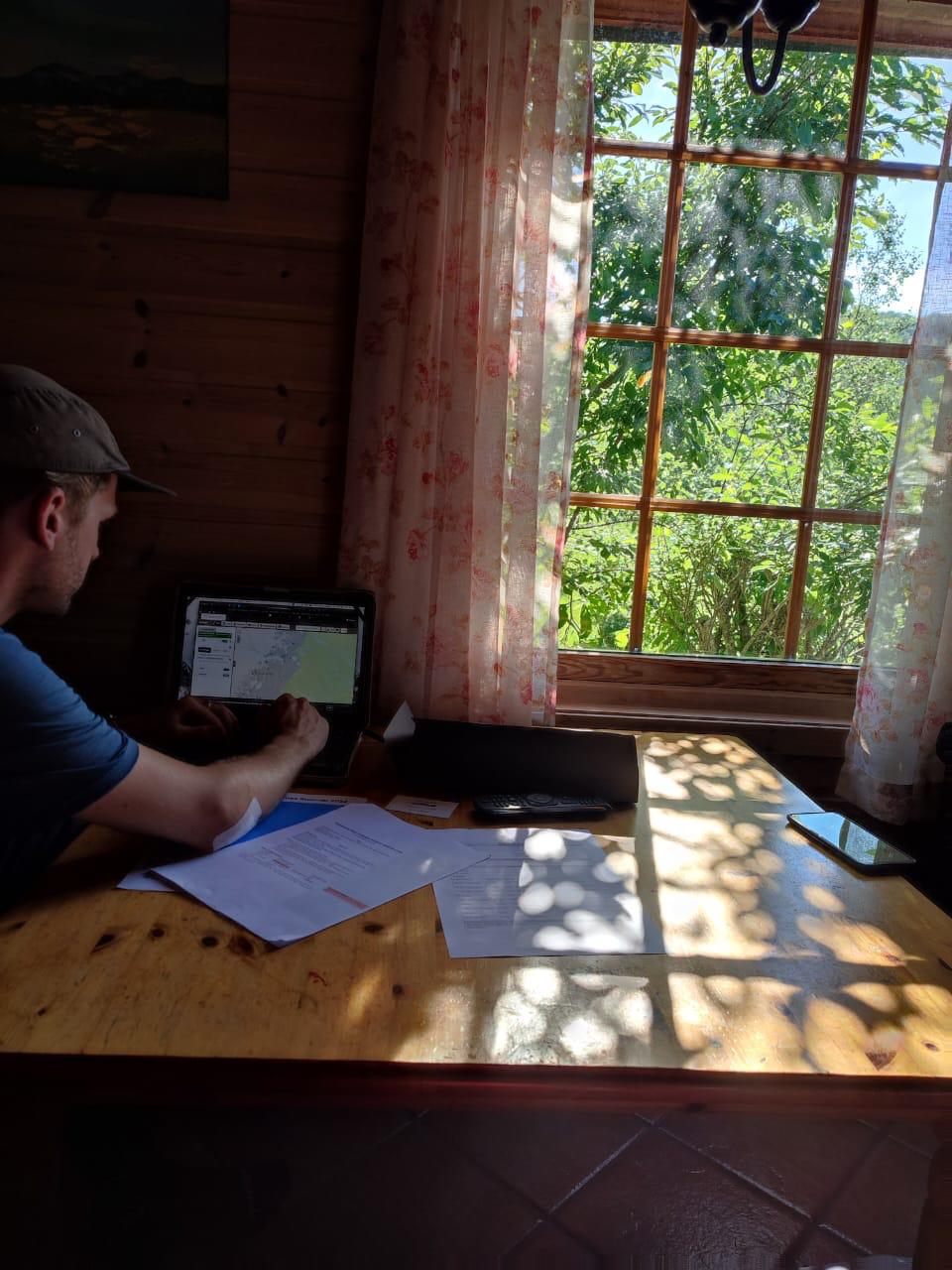


But there was no time to sit around and celebrate for too long! Because Brijesh and Marijn immediately continued onwards to Hamarøy to sample the next four lakes. Here the weather took a turn for the worse and the lakes were more inaccessible, but high catch success and scenic sampling locations kept our spirits high!
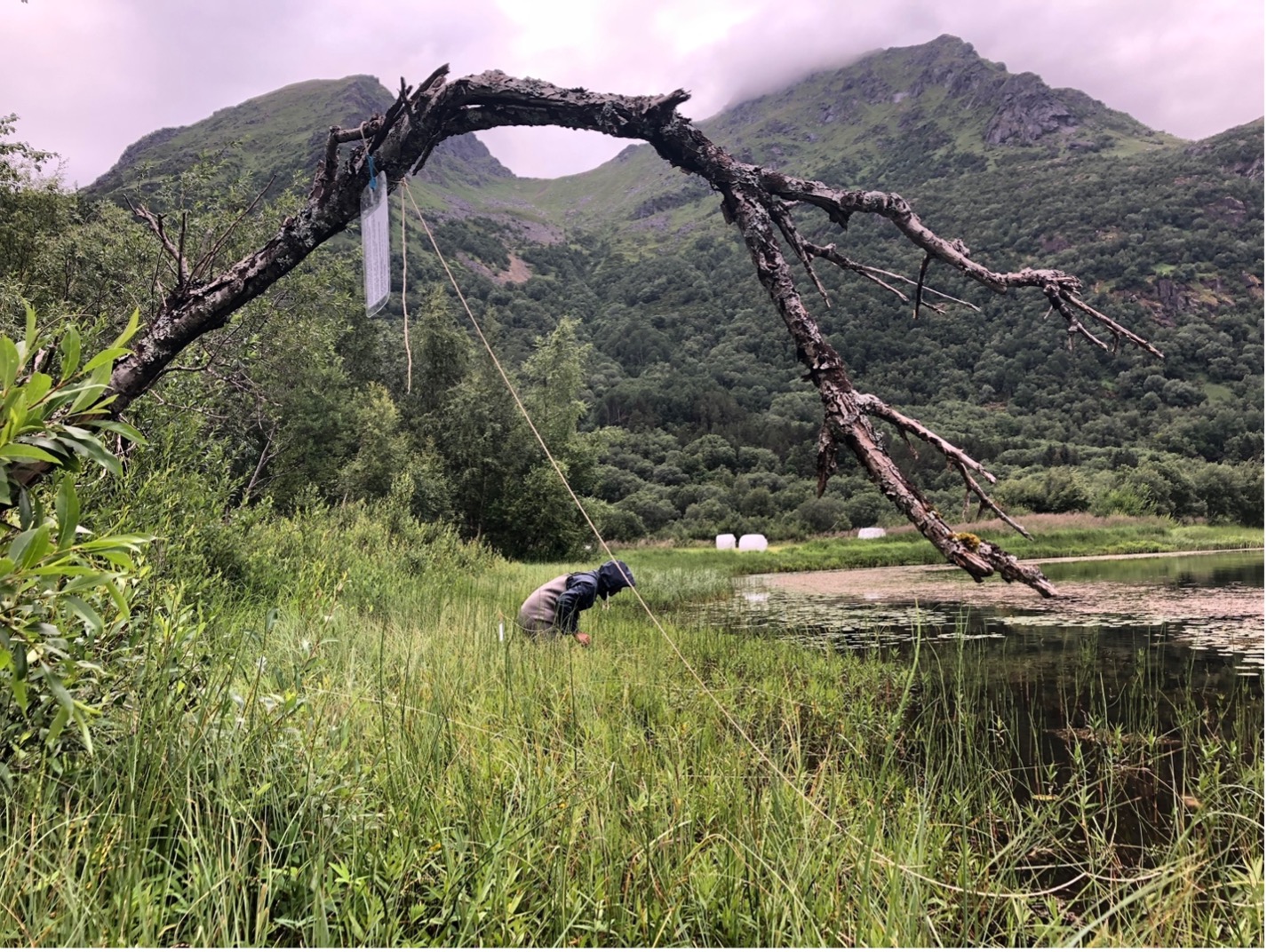
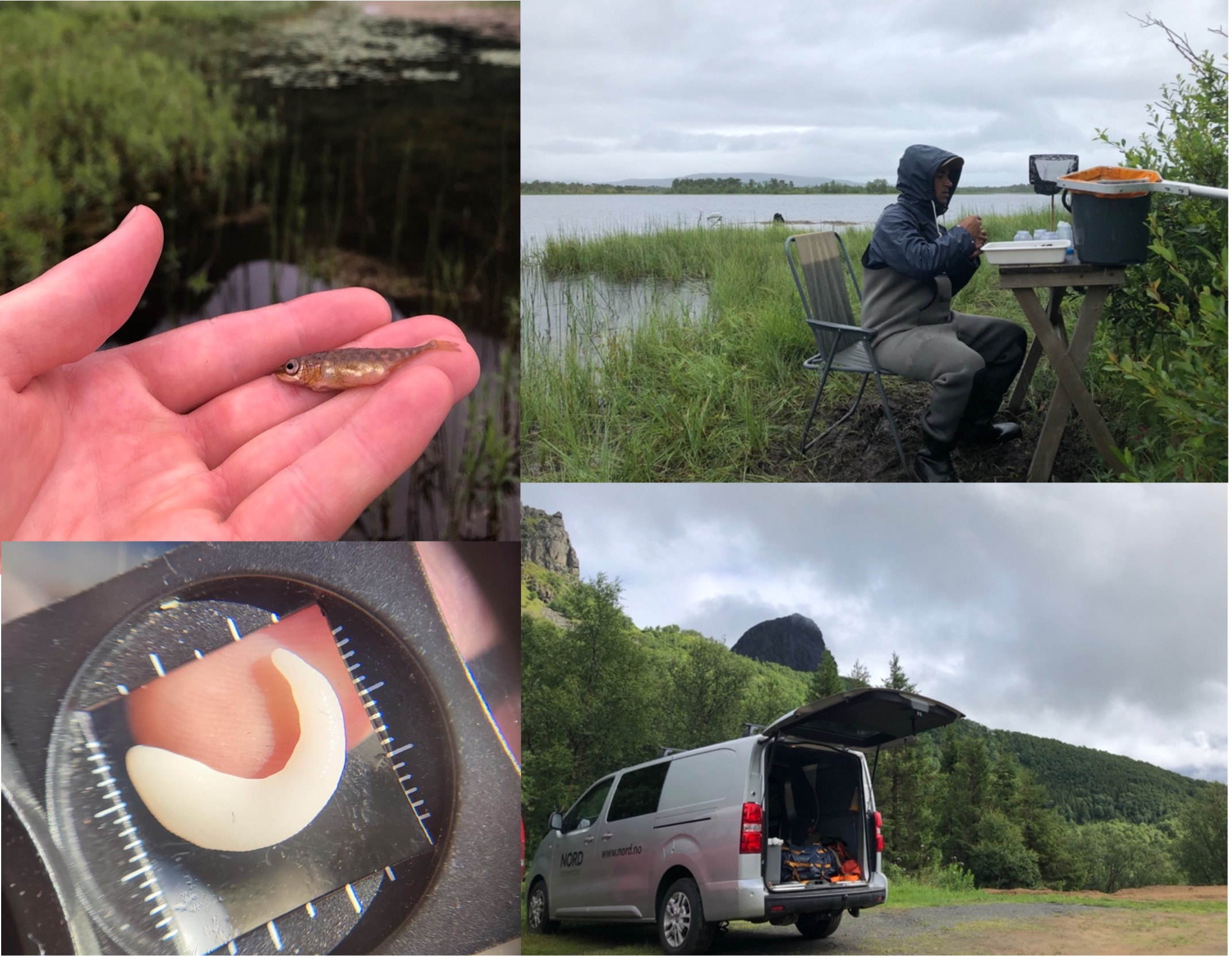
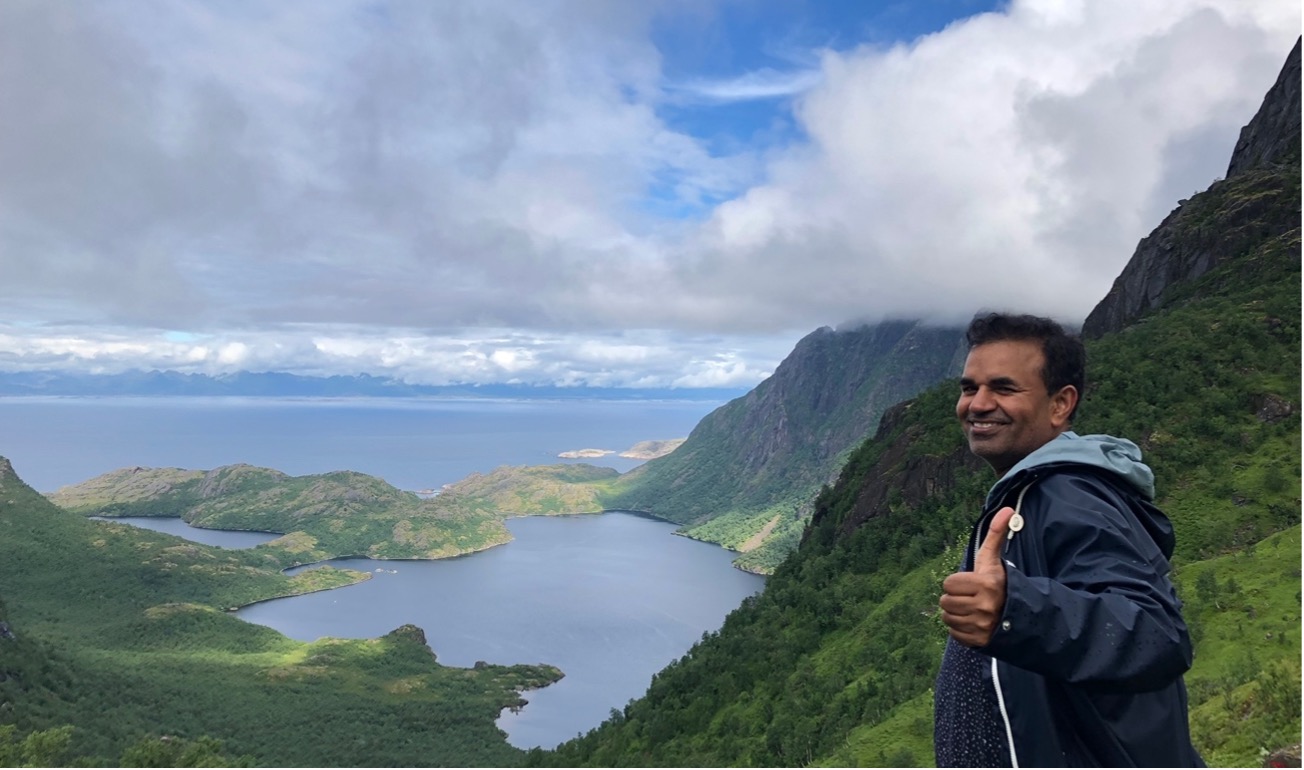
The third stop of the season was Kjerringøy. Here, Joost, Thijs, Amalia, Brijesh, and Marijn made short work of sampling another five lakes. Despite rainy and windy conditions during the first days of the trip, our sampling efforts paid off! And with a whopping 274 fish caught in the traps overnight, a new catch record was set at Storvatnet in the Strandåvassbotn Nature Reserve.
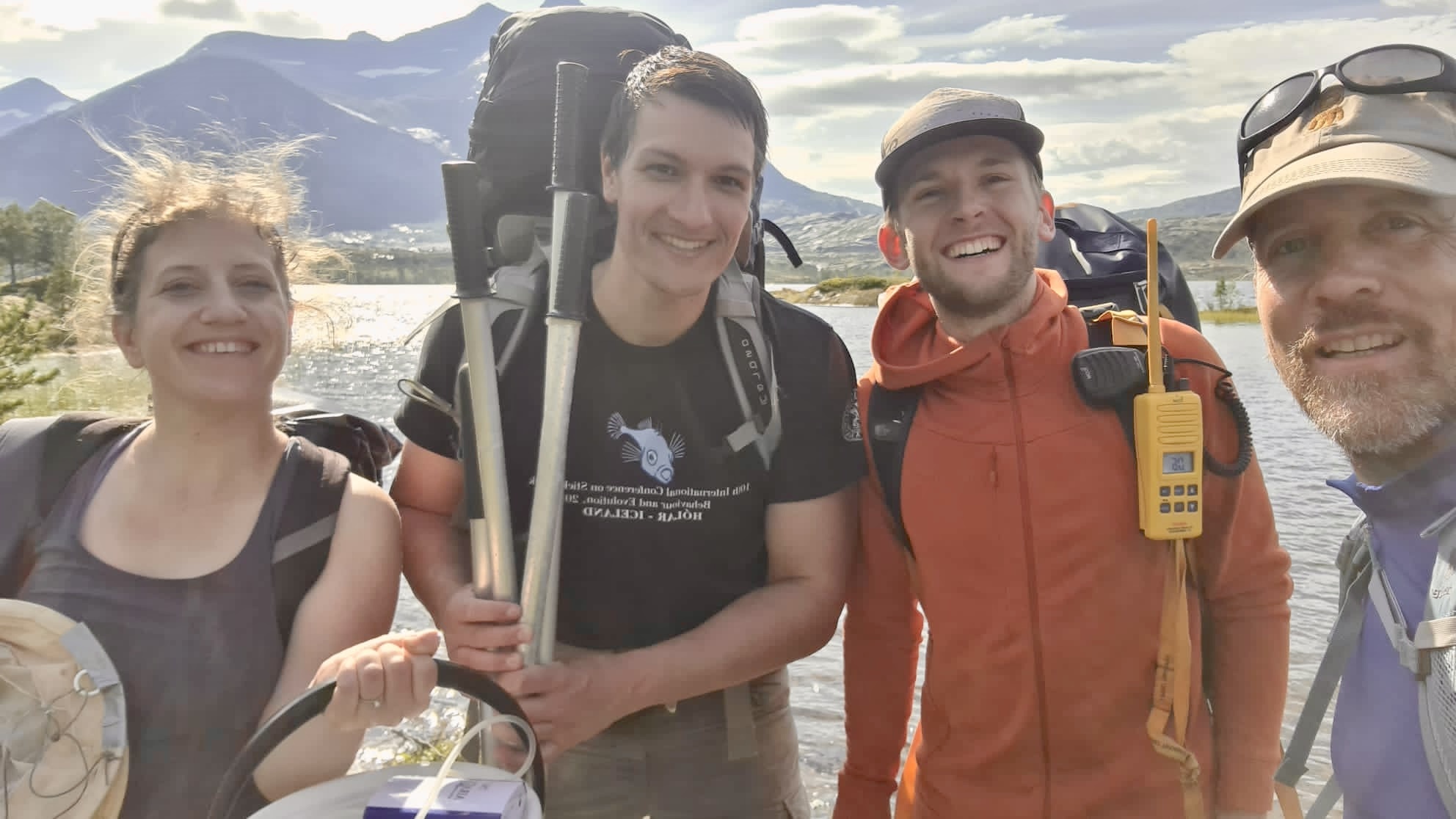
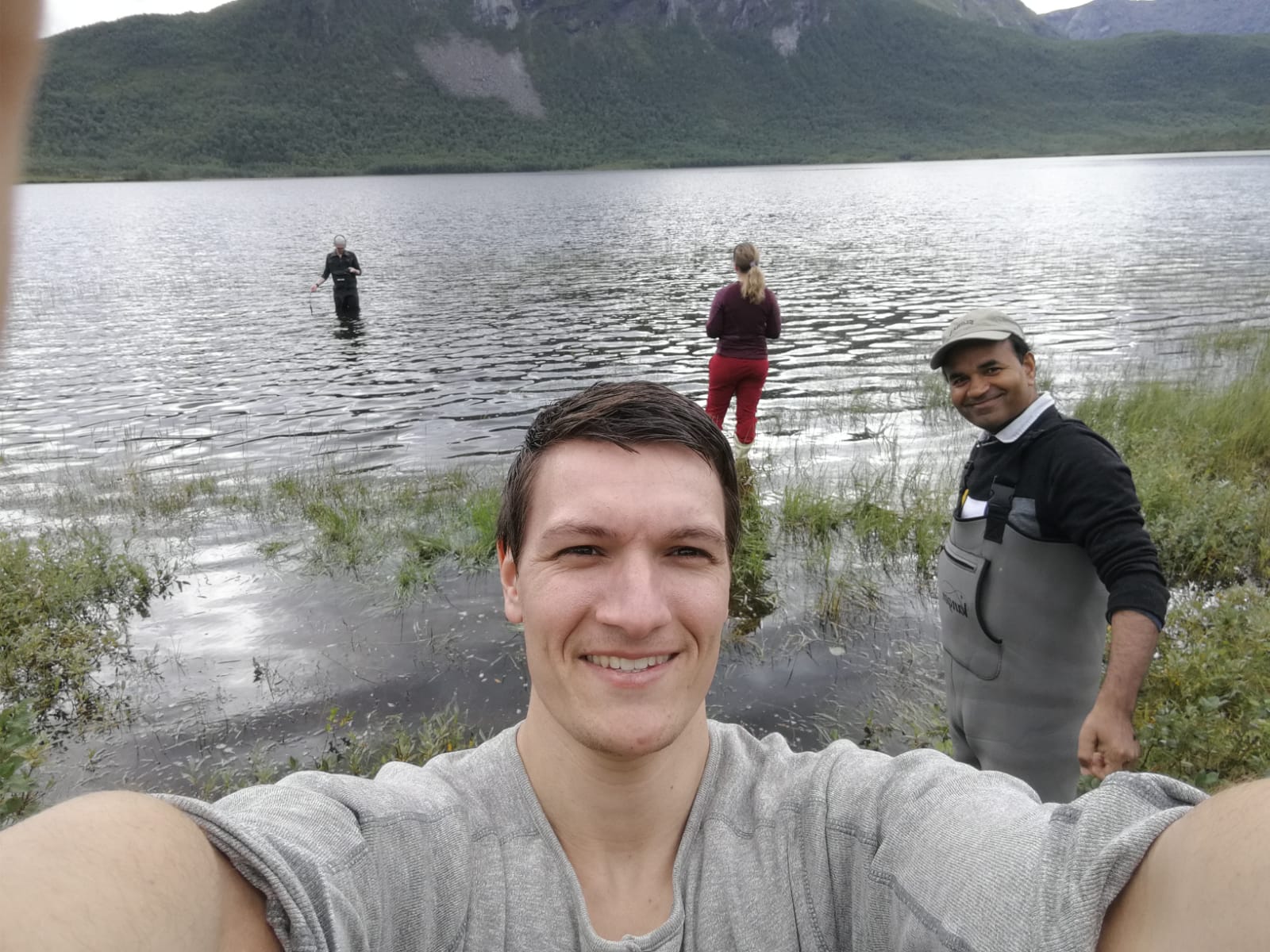
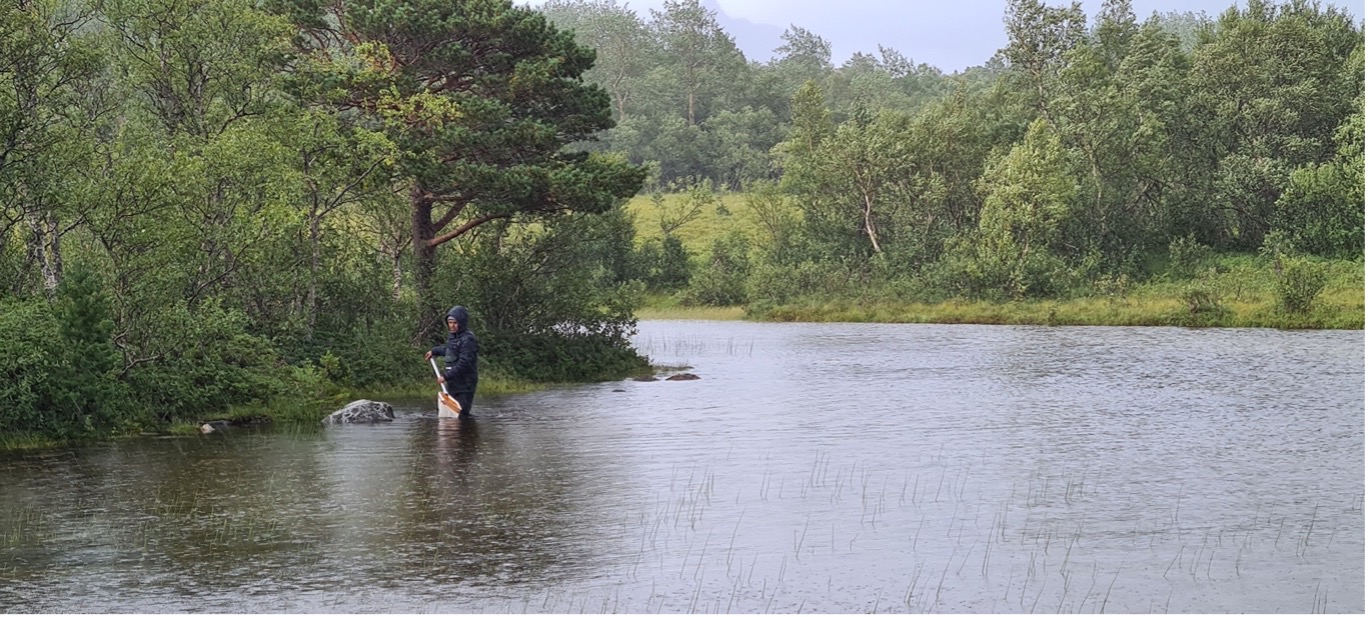
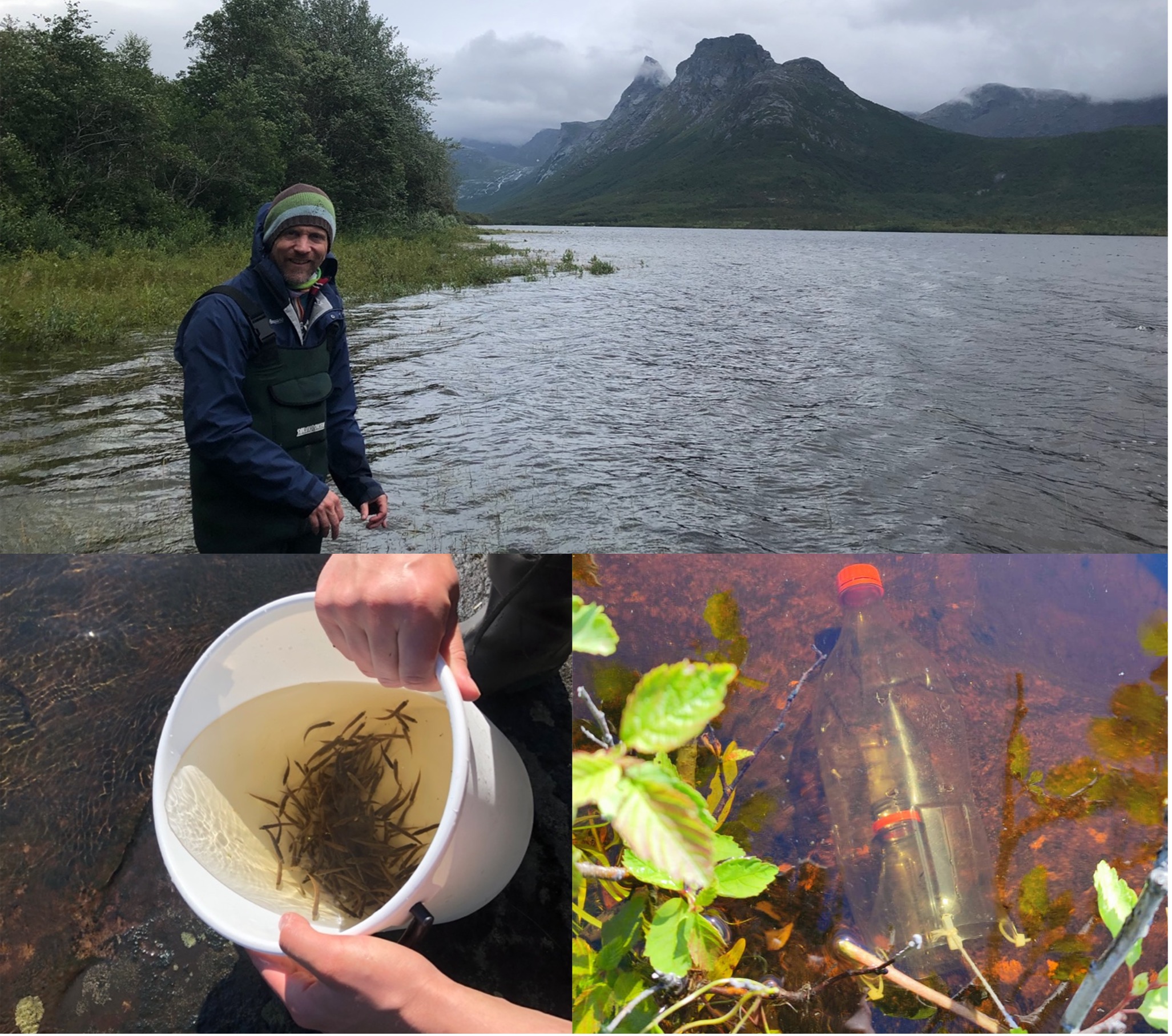
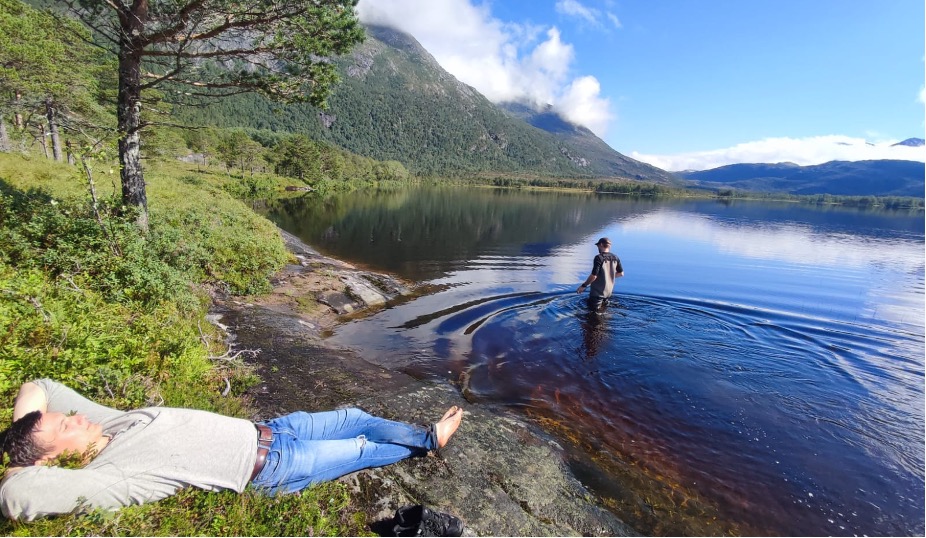
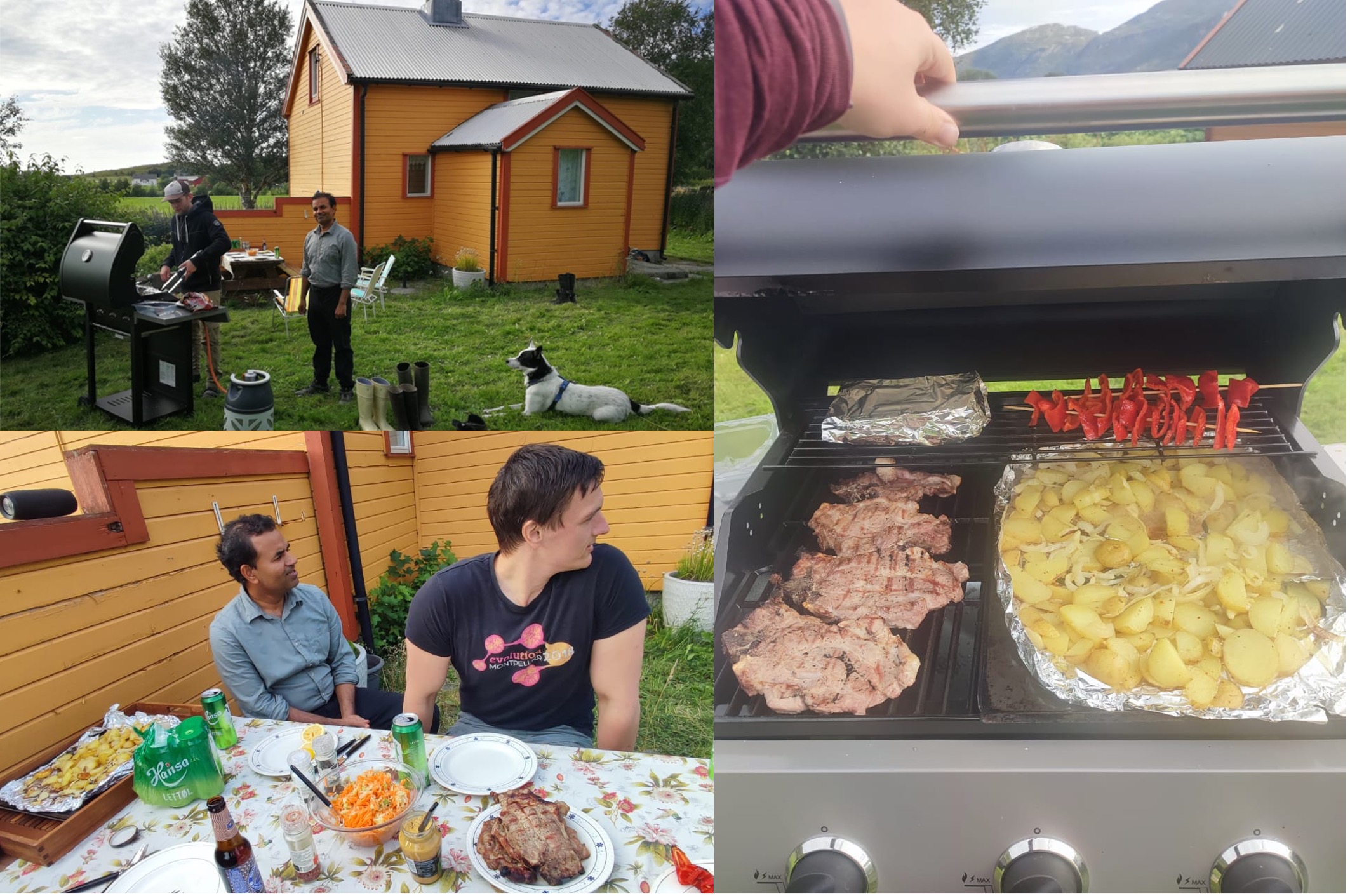
With our efforts paying off, it seemed only fair to reward ourselves with some well-deserved downtime every now and then!
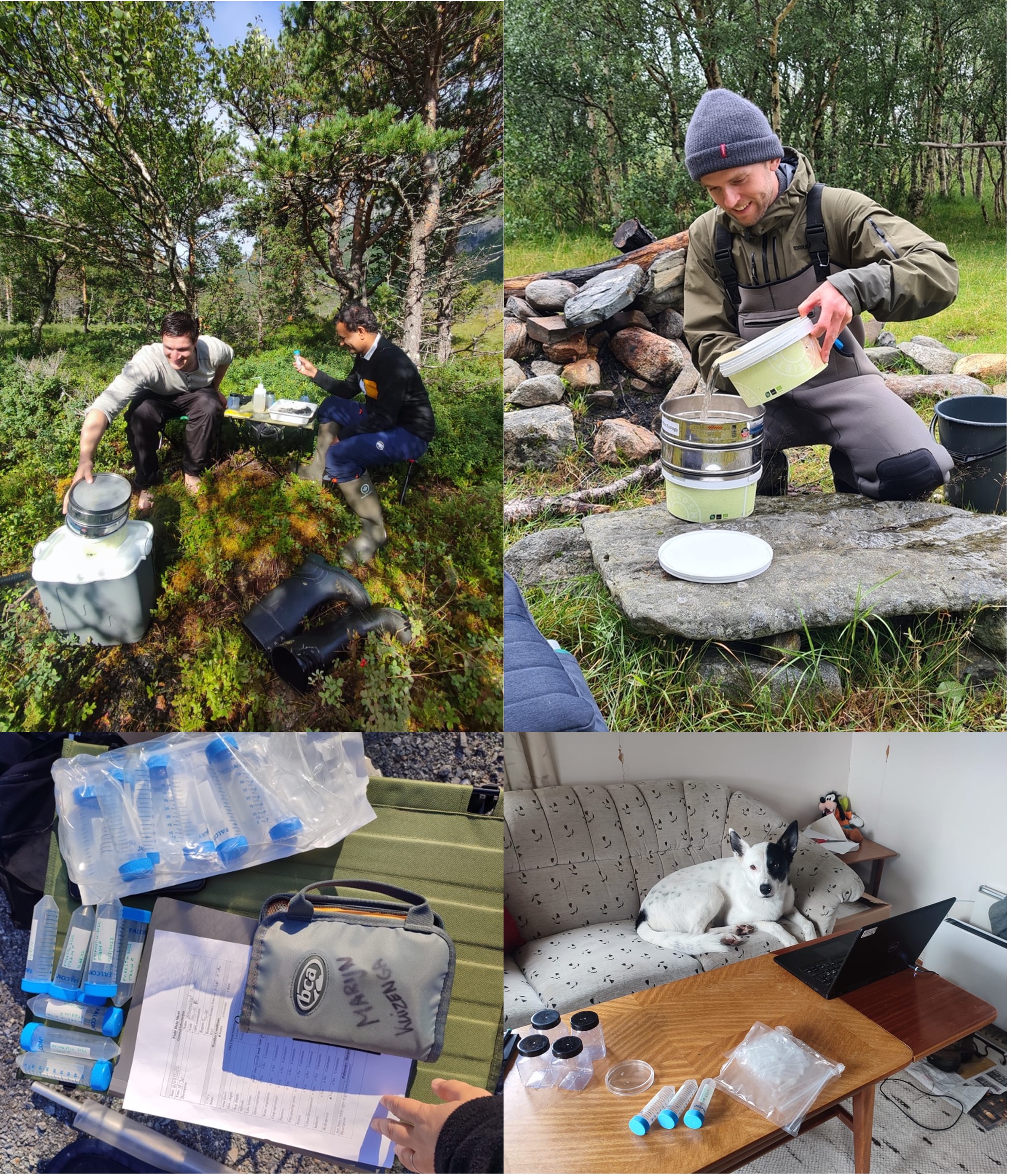
But it’s not all fun and games! At each site, pre-processing of the water and sediment samples was done as well sorting and counting of the fish and prey items. Back at the cabin, the samples were carefully stored and the fish sacrificed and registered under strict adminstrative supervision of our furry sampling mascot.
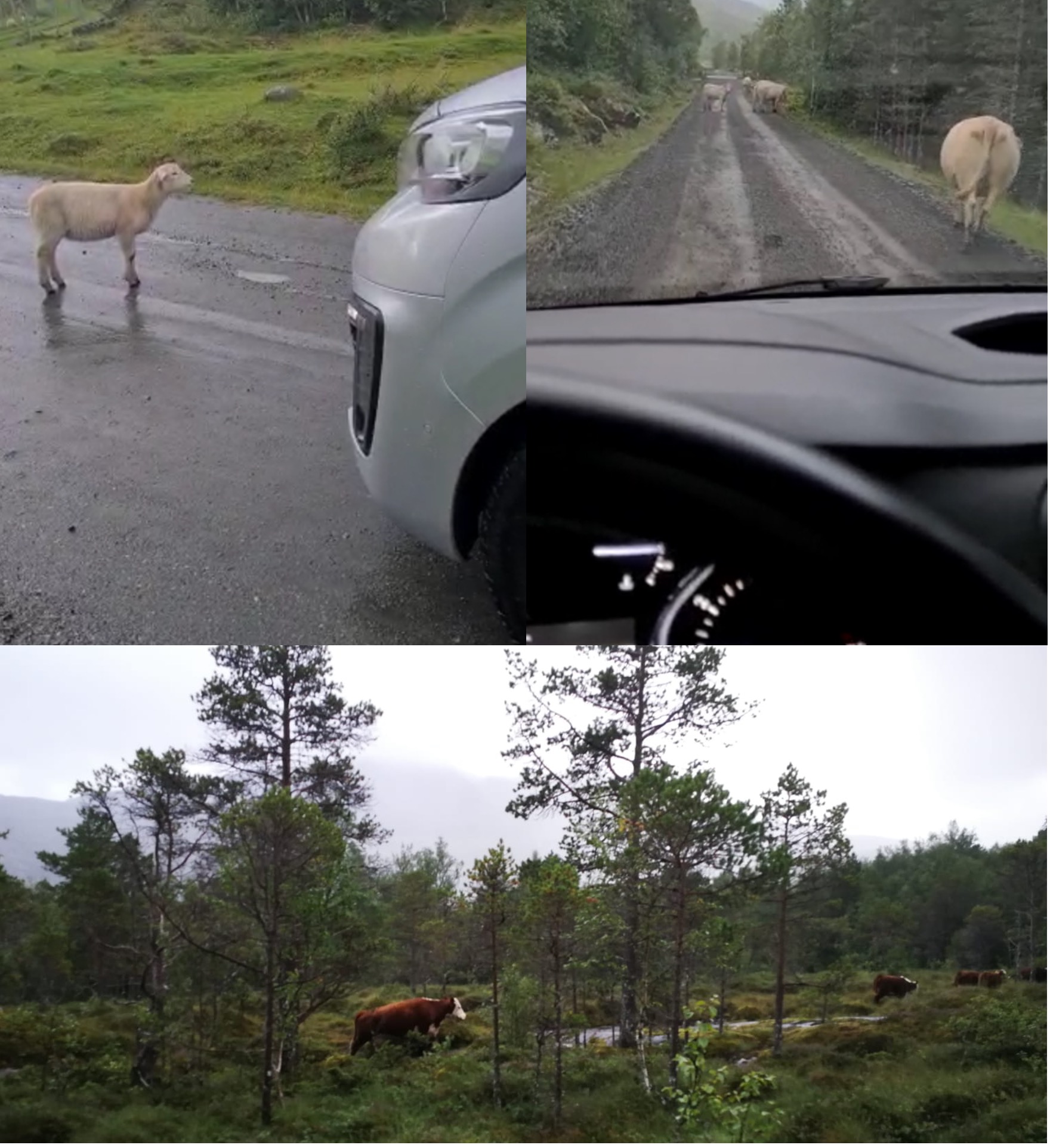

No fieldwork is complete without some livestock encounters of course… This friendly herd (bottom two pictures) accompanied us the whole 3 kilometers back from Storvatnet through the marshes and forests of Strandåvassbotn Nature Reserve.

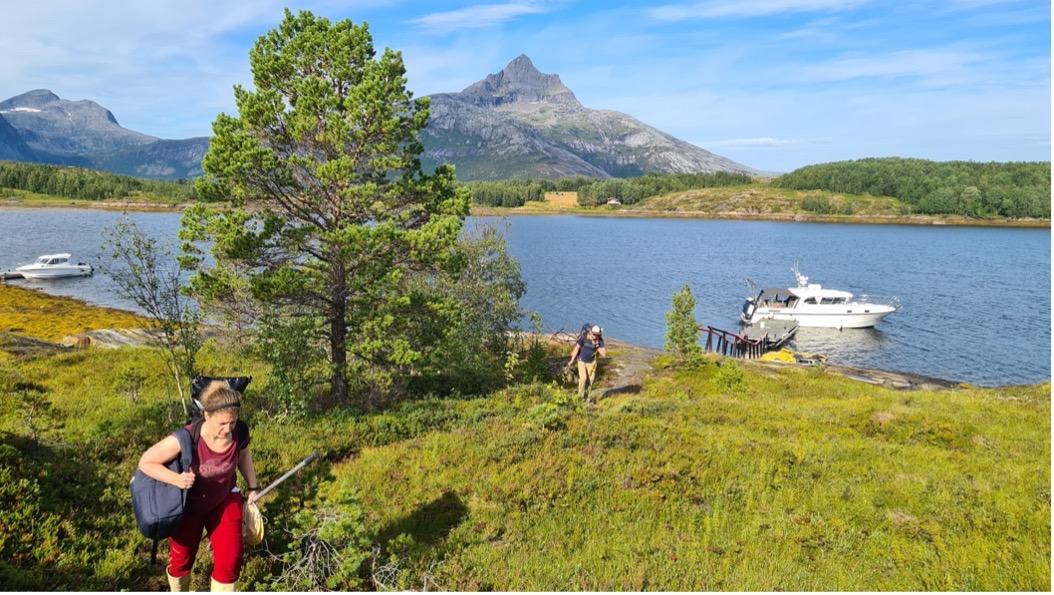
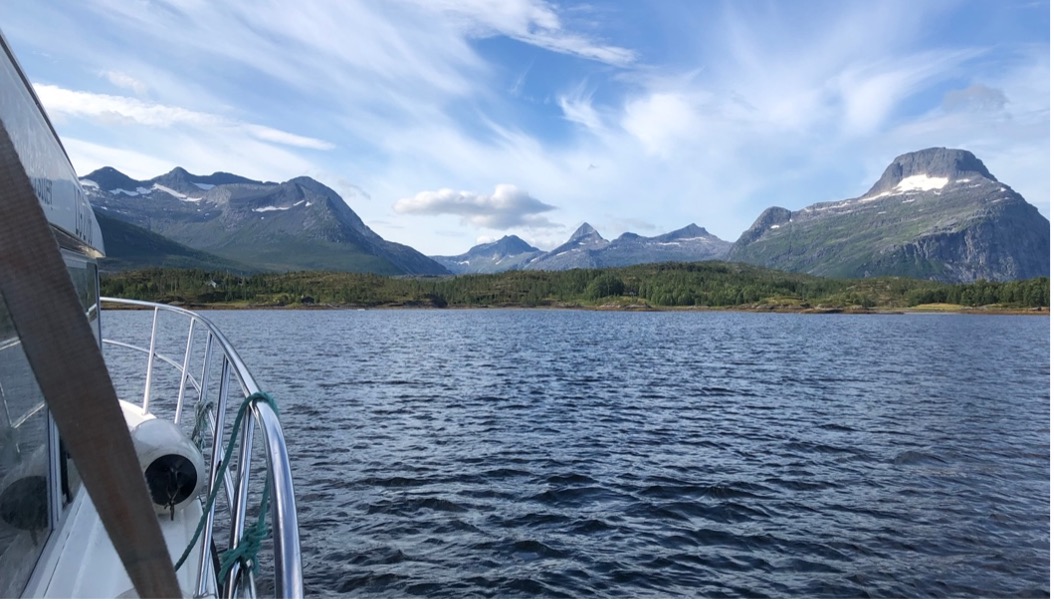
The final day of the trip was spent at Færøyvatnet. This near-pristine lake is located near the shore of Sjunkfjorden in the heart of Sjunkhatten National Park. To access this remote location, we got to hitch a very scenic ride with Morten Krogstad in Nord University’s research vessel Tanteyen. Takk for turen Morten!
After a short drive back to Bodø, the third trip of the season came to a successful ending. We are now setting our sights on Dønna where we will visit an additional five lakes. Three trips down, two to go!